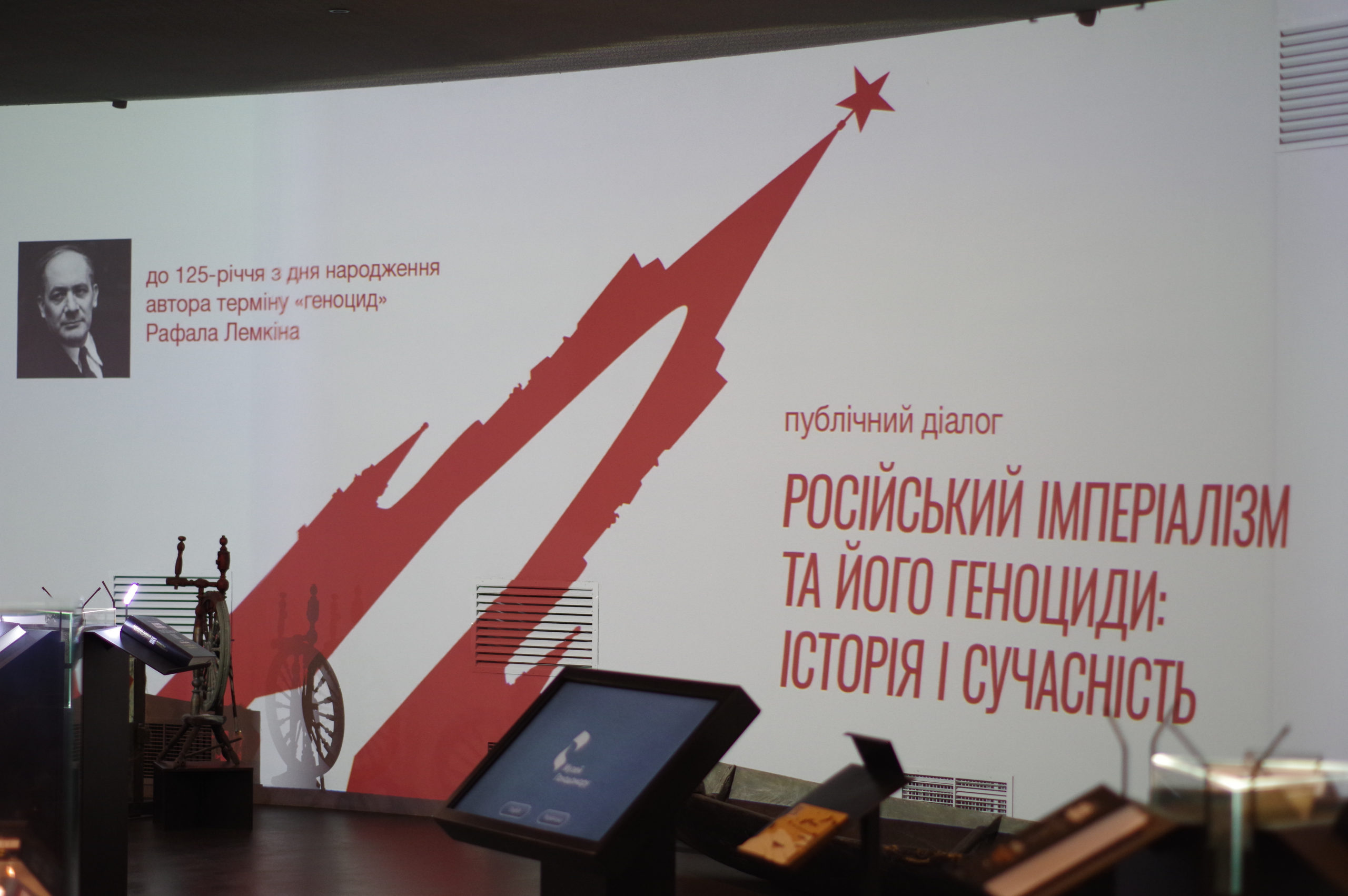The Museum analysed Russian genocides, starting with the Muscovy
On 26 June, the Museum’s Hall of Memory hosted a public dialogue entitled “Russian Imperialism and its Genocides: History and Present”. During the conversation, our speakers tried to analyse and comprehend how Russia – imperial, Soviet or modern – used genocidal practices at different historical stages to enslave peoples or seize territories.
“This problem is relevant because we are witnessing with our own eyes the revival, a new surge of Russian imperialism, which is now directed against our state and people, said Ivan Petrenko, moderator of the event, deputy head of the Museum’s Department of Genocide, Crimes Against Humanity and War Crimes Research, “Russia has unleashed an aggressive war against Ukraine and our nation, and as part of this war, the Putin regime is carrying out another genocide of Ukrainians. The Russians are trying to disguise this genocide as hostilities and war crimes. That is, to a certain extent, they are using the experience of the communist Stalinist regime when they tried to disguise crimes against Ukrainians as grain procurement, repression, and dekulakisation.”
The event was dedicated to the 125th anniversary of the birth of Raphael Lemkin, the author of the term ‘genocide’. Mykhailo Kostiv, Head of the Department of Genocide, Crimes Against Humanity and War Crimes Research at the Holodomor Museum, spoke about his personality and contribution to international law.
“Not only did Raphael Lemkin introduce the concept of genocide into international legal usage, but he was also one of the first to consider Soviet policy in the USSR and the territories under its control as genocidal,” says Kostiv. “In the United States, Lemkin collaborated with representatives of the Baltic, Ukrainian, and Polish diasporas to publicly condemn the crimes of the USSR. He participated in public events, speeches, and consultations and supported exhibitions and publications about Soviet crimes. In this way, Lemkin, along with representatives of Eastern European diasporas in the United States, shared a common vision of Soviet crimes committed by the communist regime. In particular, such intellectual cooperation allowed them to identify common features in Soviet crimes, which were characterised primarily by the destruction of the elites of a national group and the subsequent “digestion” of the majority of the representatives of a particular people.
The origins of the genocidal component and its evolution in the imperialist policy of the Moscow principality were discussed by Stanislav Fedorchuk, political scientist, and head of the Post-Russian Studies Department at the Ukrainian Strategic Initiative at NaUKMA.
“We appeal to history when we do not learn its lessons well,” stressed Stanislav Fedorchuk, ‘when we find ourselves captive to ideas about various historical phenomena, and they turn out to be not historical, but quite present. […] For a long time, the extermination of peoples, ethnic groups, communities, and groups was not considered something legally and politically condemnable. It seemed that if the political goal justifies such a means as the destruction of a people, forcing them to obey, then why not? It was only in the twentieth and twenty-first centuries that we began to realise with horror that it is forbidden to use the power to exterminate an entire people, to assimilate them, to resettle them, to deport them, and so on.”
The purpose and peculiarities of the genocides committed by the Soviet regime were analysed by Andrii Ivanets, a senior researcher at the Holodomor Museum.
“People often manipulate the fact that the Holodomor was part of the all-Union famine or that we have no evidence that Stalin intended to exterminate Ukrainians,” Andrii Ivanets emphasises, “however in 1930, during collectivisation, almost half of the riots were in Ukraine. And Lyudmyla Hrynevych found an interesting fact: the top military and political leadership of the USSR instructed General Alexander Svechin to analyse which people and which region could pose problems within the USSR in the event of war. And he came to the conclusion that the greatest threat was posed by Ukraine and the Kuban, whose population was predominantly Ukrainian. And in August [1930], a letter, now known as a secret document, from Stalin to Kaganovich, appears, saying that we could lose Ukraine. And Stalin was aware of this fear of losing Ukraine. And after that, we see how all these commissions went to Ukraine and began to use more brutal methods that led to mass deaths. At the same time, there was a large-scale famine in Kazakhstan, which began even earlier – in 1930.”
Vitalii Benchuk, a history teacher at the Mariupol Lyceum in Kyiv and a researcher of the current Russian-Ukrainian war, spoke about the modern use of genocidal practices in the example of the blockade of Mariupol in 2022.
“The example of Mariupol shows that the current Russian-Ukrainian war is a war to exterminate the Ukrainian people, a genocide against Ukrainians,’ said Vitalii Benchuk. ‘According to official figures, 20,000 to 22,000 people died in Mariupol. However, other data indicate 100,000 dead. The Russians shelled houses, crowded places and critical infrastructure. The first thing they did was to cut off the city’s electricity supply. Due to the lack of electricity, the water supply disappeared. The next step was when the Russians started bombing food warehouses. Then the gas supply was cut off. Such actions are qualified under international law as creating conditions calculated to bring about the physical destruction of a particular group in whole or in part. In addition, they committed several serious war crimes that became known throughout the world. And when they captured the city, they took Ukrainian books from the library and replaced them with propaganda literature. The history of Mariupol shows that Russia’s goal is not to seize territory, but to commit genocide against the Ukrainian people.”
Dear friends, you can learn more from the recording of the public dialogue, which will be available on our Facebook page for 30 days and on our YouTube channel.
